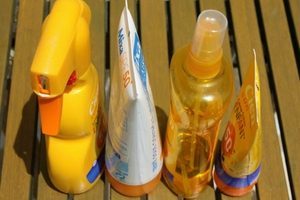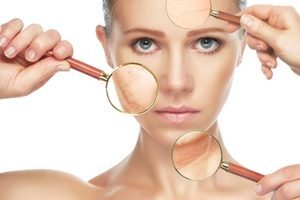As an Aesthetic Practitioner you will be well aware of the importance of protecting your skin from the sun. However, this awareness does not always carry over into the general public. To help advise your patients on the importance of sun protection and the different products available Shailesh Patel, superintendent pharmacist at Pharmacyspace offers his five minute guide to sunscreen and sun care.
Most of us enjoy being in the sunshine, it makes us feel good, but too much sun exposure can lead to adverse effects on our skin such as; sunburn, skin ageing, sun induced skin allergies, cold sores and immunosuppression of the skin. So using a good sunscreen product with an SPF30 or above and a high UVA protection rating should be an essential part of a daily skin care routine, as well as seeking shaded areas to avoid sun exposure during 11.00am and 3.00pm, and protecting the skin with clothing.
Sun protection needs of individuals will vary according to;
- skin type,
- age,
- gender and
- daily activities.
It is important to provide product recommendation and advice which provides protection against both UVA and UVB radiation. UVB has a wavelength of 290 – 320 nm and is mostly responsible for sunburn and contributes to skin ageing. In the UK the sun is at its strongest in the middle of the day between 11.00am and 3.00pm. In hotter regions nearer the equator, UVB is more constantly present and intense.
UVA radiation has a longer wavelength of 320 – 400nm. Although it does not burn the skin, UVA does increase the burning effect of UVB and can cause skin cancers just as much as UVB. It is little affected by the seasons – it can be almost as strong in the winter as in the summer. This is why it is important to use a sunscreen which has high UVA protection. UVA penetrates deep into the dermis, where the supporting collagen and elastic fibres are contained. Much of the signs of skin ageing, such as loss of skin tone, sagging, enlarged blood vessels, uneven skin tone and wrinkles, are the result of UVA exposure. It is also responsible for photosensitivity reactions.
Skin type affects how the skin will react to the sun
One of the most commonly used skin type classifications is provided below.
| Type | Features |
| Type I | Northern European. Pale skin, often burn and rarely tan. They generally have light coloured hair or red hair and freckles. Blue or green eyes. |
| Type II | European/Scandinavian. Usually burn but may gradually tan. They are likely to have light hair, and blue or brown eyes. Some may have dark hair but still have fair skin. |
| Type III | Southern European. Central European. Burn with long exposure to the sun but generally tan quite easily. They usually have a light olive skin with dark hair and brown or green eyes. |
| Type IV | Mediterranean, Asian, Latin America. Burn with very lengthy exposures but always tan easily as well. They usually have brown eyes and dark hair. |
| Type V | East Indian, African, Native American, Have a naturally brown skin, with brown eyes and dark hair. They burn only with excessive exposure to the sun and their skin further darkens easily. |
| Type VI | African, Aboriginal. Have dark brown/black skin with dark brown eyes and black hair. They burn only with extreme exposure to the sun and their skin further darkens very easily. |
Adapted from D’Orazio JA, Jarrett S, Marsch A, Lagrew J, Cleary L (2013). Melanoma – Epidemiology, Genetics and Risk factor. Recent advances in the biology, therapy and management of melanoma. Dr Lester Davids (ed).
Skin types I and II are at the greatest risk of sunburn and skin ageing whilst in the sun. Whereas darker skin types have increased levels of melanin and provide more protection.
What’s in the sunscreen products?
Sunscreen products contain organic UV filters (chemicals which are designed to absorb UV light) such as ethylhexyl methoxycinnamate, and inorganic (mineral) filters such as titanium dioxide which reflect and scatter the ultraviolet radiation (UVR) at the skin surface. Once opened, the packaging will give an indication of the expiry of the product. After this expiry period sunscreens will lose their effectiveness; this is normally an icon of a small jar upon which will be a number, generally 3, 6 or 12, with a ‘M’ next to it.
What is Sun Protection Factor (SPF)?
The SPF is mainly a measure of UVB protection and indicates how long a person can stay in the sun without burning with sunscreen on compared to a person without sunscreen on. For example, if it takes 20 minutes for unprotected skin to start to burn (turn red), then a SPF 15 sunscreen will protect them for 15 times longer (i.e. approx. 5 hours). However, it is important to remember that sunscreen products should not be used to increase the amount of time spent in the sun. SPFs are now categorized as providing low to very high protection. These are also printed on the product labels.
| Low protection | SPF 6 and 10 |
| Medium protection | SPF 15, 20 and 25 |
| High protection | SPF 30 and 50 |
| Very high protection | SPF50+ |
What are the UVA stars and circle?
The star system is widely used in Europe to indicate a products UVA protection. A product with five stars indicates excellent protection against UVA equal to the SPF. The EU recommendations in 2006 also introduced a UVA logo (letters UVA printing in a circle) to show that the product achieves the requirement.
How to apply sunscreens correctly
It is widely recognised that people who use sunscreen protection do not apply the required amount of sunscreen. Hence the importance to apply sunscreens evenly and liberally to achieve the indicated SPF. Particular attention should be given to those areas that burn easily such as ears, nose, neck and lips (via a lip screen).
Sunscreens should be applied 30 minutes before going out and to apply a second application just as you go out i.e. 30 minutes after the first application to correct missed areas and ensure adequate application. If a sunscreen has a high SPF factor it will provide greater protection to the areas where they are thinly applied. As a general guide an average sized adult should apply approximately 35ml (6 full teaspoons) for full body application – a teaspoon for the face, each arm, each leg, the front of the body and the back.
An overview of our advice on protecting your skin from sun damage
- Choose a sunscreen labelled broad spectrum or high protection against UVA and UVB so it offers balanced UVA and UVB protection e.g. SPF30 and 5 star UVA
- Do not stay in the sun too long, even whilst using sunscreen, as no sunscreen can provide 100% protection
- Use a high protection sunscreen and re-apply frequently and generously, especially after perspiring, swimming or towelling
- In sunny weather, seek shade between 11am and 3pm
- Cover up with clothing and don’t forget to wear a hat that protects your face, neck and ears, and sunglasses
- Never let your skin burn
- A tan is a sign of sun damage to the skin

Pharmacyspace is based in Aylesbury, Buckinghamshire and is dedicated to providing a trusted and cost-effective service for your clinic supplies. The handpicked team of dedicated staff will ensure that you get the products you need for your clinic, together with a professional service.









